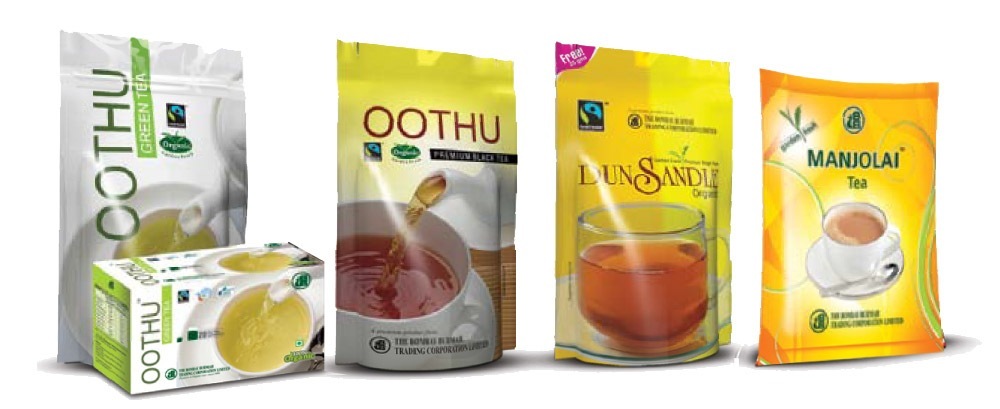1. At a Glance
Welcome toBombay Burmah Trading Corporation Ltd (BBTCL)— a company so old it probably supplied tea for the British Raj, yet so diversified it could single-handedly run a village economy. From selling teak in 1863 to owning half of Britannia’s biscuits, a chunk of Go Airlines (oops, insolvency!), and tea estates in both Tamil Nadu and Tanzania — this 162-year-old beast doesn’t just trade, it survives.
As of21 November 2025, BBTCL trades at₹1,862/share, valuing it at₹13,001 crore. The latest quarter (Q2 FY26) sawsales of ₹4,943 croreandPAT of ₹241 crore, with a quarterly YoY growth of3.82% in salesand a4.85% decline in profit— nothing dramatic for a conglomerate that’s basically a biscuit-and-balance-sheet buffet.
TheP/E ratio sits at 11.6,ROE at 21.9%,ROCE a stellar 35.5%, and adebt-to-equity ratio of 0.39, proving this Wadia heirloom knows how to juggle sugar, solvency, and solvency proceedings (hello, GoAir).
So, what happens when a tea planter, biscuit tycoon, auto-electrical manufacturer, and dentist walk into the same boardroom? You get Bombay Burmah.
2. Introduction
Let’s get this straight — Bombay Burmah is not your regular “chai aur biscuit” company. It’s thechaotic elder cousinin the Wadia family reunion, the one with a mix of plantations, FMCG royalty (Britannia), failed airline bets (GoAir), and random side hustles like dental products and horticulture.
Founded in1863, it’s older than the Indian railways’ official timetable, yet it continues to plant, manufacture, invest, and occasionally lose money in spectacular fashion.
Over 150 years of existence and it still refuses to stick to one business vertical. It’s as if BBTCL’s board wakes up every few years and says, “What’s the weirdest new sector we can enter?” – and voila, there’s an acquisition in Tanzania or a new solenoid plant in Chennai.
But the irony?96% of BBTCL’s revenue comes from just one subsidiary – Britannia Industries Ltd.So, while BBTCL flaunts a diversified portfolio, it’s basically a Britannia wrapper covering some exotic plantation dust.
Still, when your biscuit brand funds your tea business, and your tea profits help write off airline losses, you’ve mastered circular capitalism.
3. Business Model – WTF Do They Even Do?
Imagine a thali platter. In the center: Britannia biscuits, crispy and profitable. Around it:
- A little bowl of tea plantations in South India and Tanzania,
- A side dish of Electromags auto parts,
- A garnish of horticulture (because why not plants?),
- A tiny dab of dental supplies.
That’s BBTCL’s business model — a buffet of unrelated industries somehow held together by a 162-year-old brand and a lot of dividend income.
Here’s how the revenue mix looks (Q1 FY25):
- Food, Bakery & Dairy Products – 96%(Britannia’s biscuits, cakes, and dairy magic)
- Investments – 2%(stakes in Britannia, Bombay Dyeing, and National Peroxide worth ₹58,500 crore market value in FY24)
- Other Segments – 2%, including tea, horticulture, dental products, and auto-electrical components.
Oh, and rememberGo Airlines (India) Ltd? BBTCL owns32.61%of that grounded bird. It booked₹1,865 croreconsolidated loss in FY23 due to GoAir’s bankruptcy. It’s like buying a plane ticket to nowhere and calling it an investment.
Still, debt has dropped drastically from₹5,800 crore in FY22 to ₹2,100 crore in FY24, thanks to selling itscoffee estate for ₹291 crorein 2023. At least they’re brewing debt reduction with actual coffee beans.
4. Financials Overview
| Metric (₹ Cr) | Latest Qtr (Sep ’25) | YoY Qtr (Sep ’24) | Prev Qtr (Jun ’25) | YoY % | QoQ % |
|---|---|---|---|---|---|
| Revenue | 4,943 | 4,761 | 4,712 | 3.82% | 4.9% |
| EBITDA | 936 | 724 | 724 | 29.2% | 29.2% |
| PAT | 241 | 253 | 498 | -4.85% | -51.6% |
| EPS (₹) | 34.64 | 36.22 | 34.50 | -4.4% | 0.4% |
BBTCL’s
quarterly numbers show a modest top-line climb but a profit pause — mostly because other income (Britannia dividends) plays musical chairs every quarter.
Annualized EPS comes to ₹138.6, giving a P/E of ~13.4 — quite low for a company owning half of Britannia. That’s like buying Britannia biscuits at a discount box price.
5. Valuation Discussion – Fair Value Range (Educational Only)
Let’s crunch this, auditor-style:
Method 1 – P/E ValuationCurrent EPS (TTM): ₹162Industry P/E (FMCG peers like Britannia, Nestle): ~60Even with a holding-company discount of 70%, fair value range == ₹162 × (60 × 0.3 to 0.4)=₹2,916 – ₹3,888 per share
Method 2 – EV/EBITDAEV = ₹14,475 CrEBITDA (FY25): ₹3,336 CrEV/EBITDA = 4.34x (peer FMCG average: ~20x)Fair value range = 0.4–0.6 × peer = 8–12xSo fair EV = ₹26,700–₹40,000 Cr →₹3,400 – ₹5,100 per share
Method 3 – DCF (Simplified)Assume FCF ₹1,800 Cr growing 6% p.a., discount rate 12%.FV = ₹1,800 × (1.06)/(0.12–0.06) = ₹31,800 Cr.After 35% holding discount = ₹20,700 Cr →₹2,800 – ₹3,200 per share.
👉 Educational Fair Value Range: ₹2,800 – ₹4,800 per share
Disclaimer: This fair value range is for educational purposes only and not investment advice.
6. What’s Cooking – News, Triggers, Drama
Oh, plenty:
- Nov 2025:Crisil and Ind-Ra reaffirmedAA-/Stableratings — because the balance sheet now looks like a Britannia biscuit box instead of GoAir’s wreckage.
- Mar 2025:Board approved sale of lands in Tamil Nadu worth crores — apparently, they’re done growing tea in Muppandal and ready to grow profits instead.
- FY24:Booked zero pledges, zero promoter change — impressive restraint from the Wadia playbook.
- FY23:Massive₹1,865 Cr GoAir loss(yes, they tried to fly). But debt fell sharply in FY24 after selling coffee

